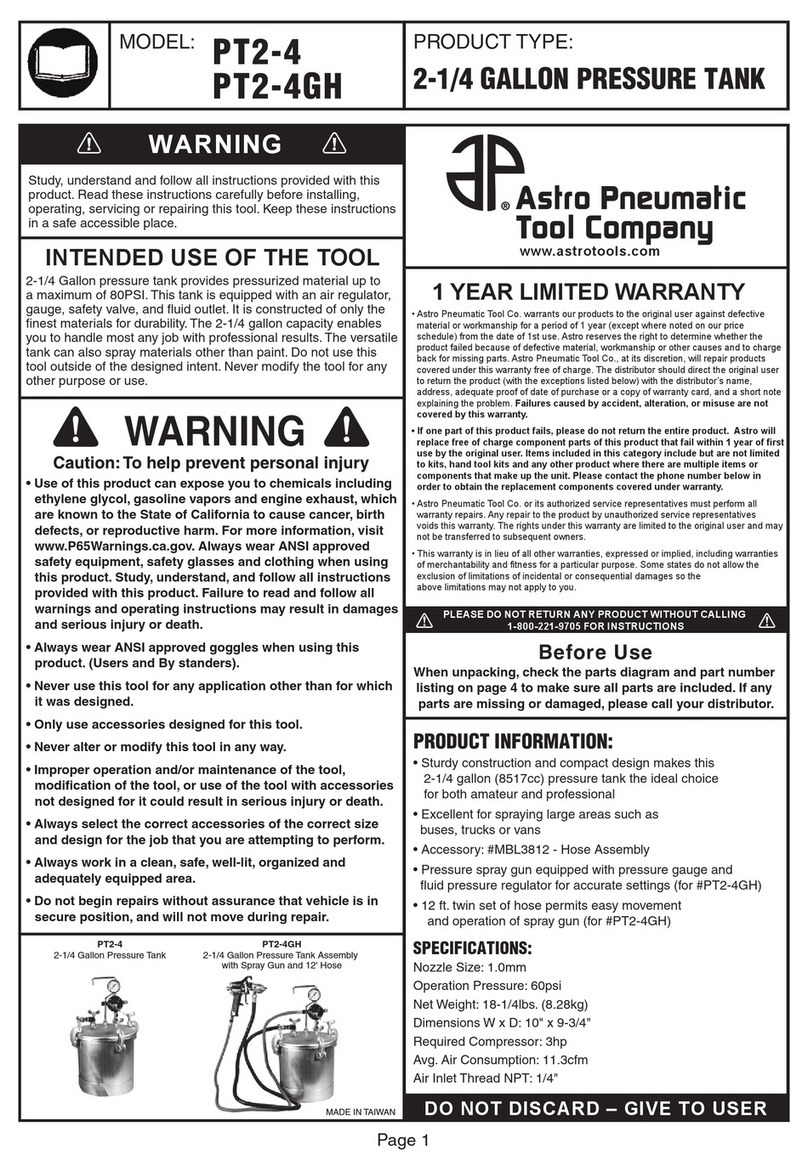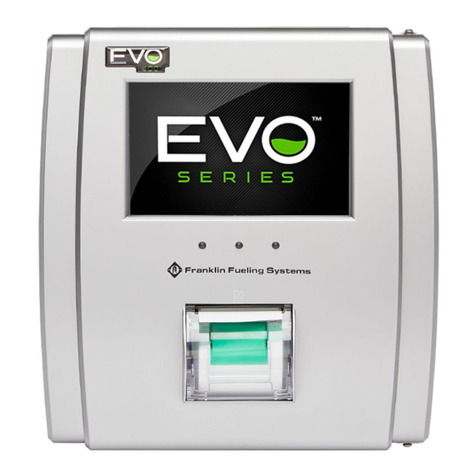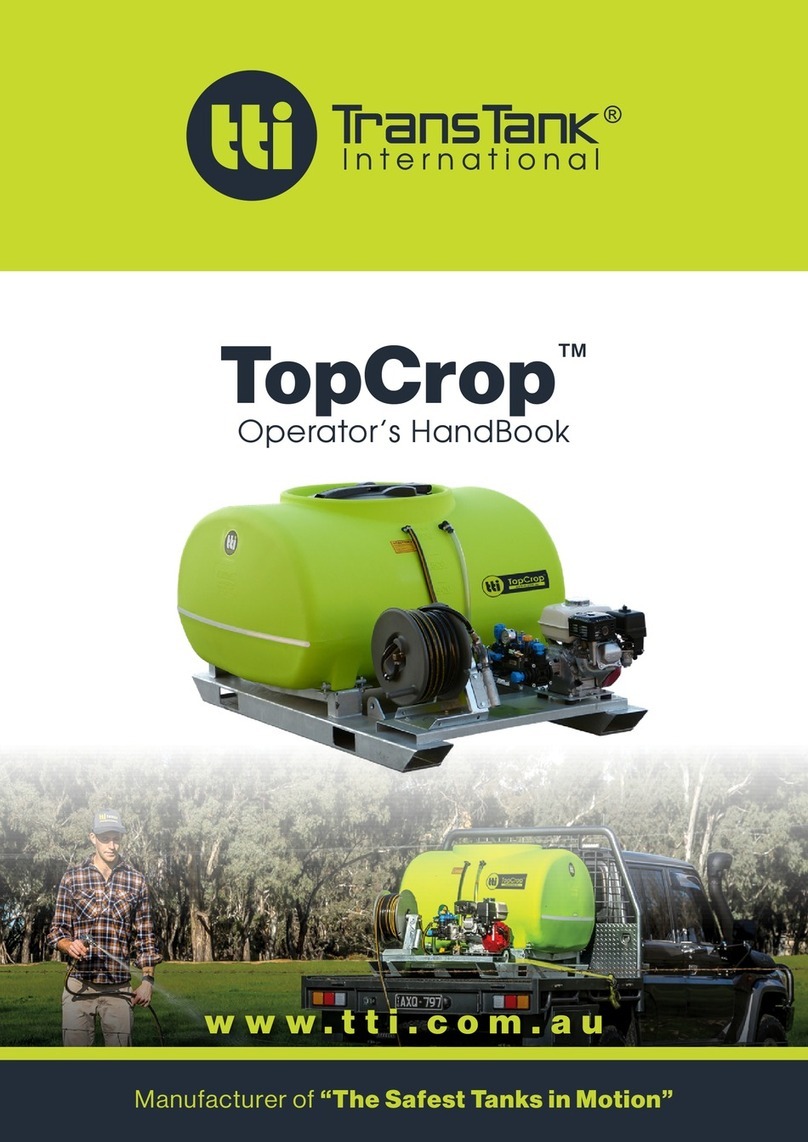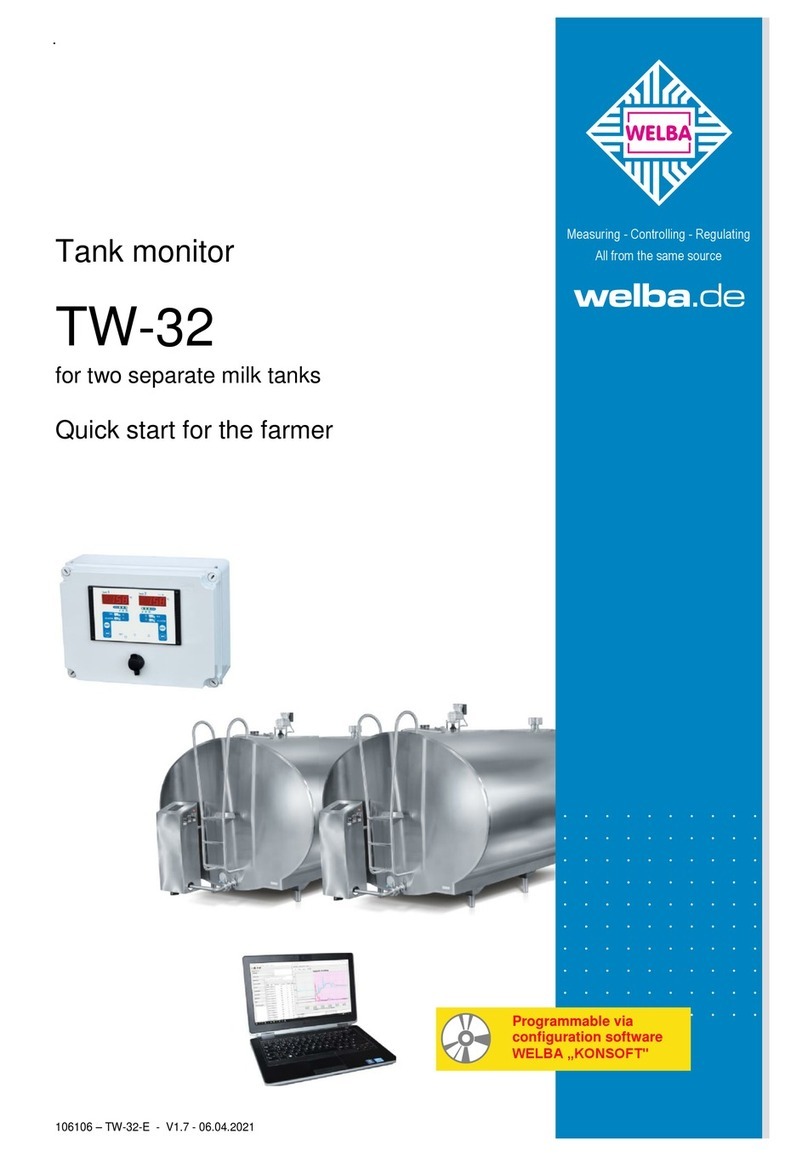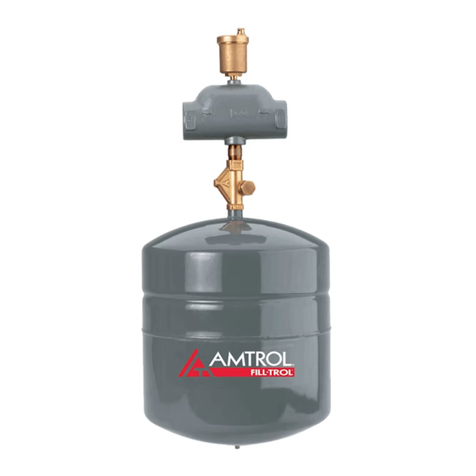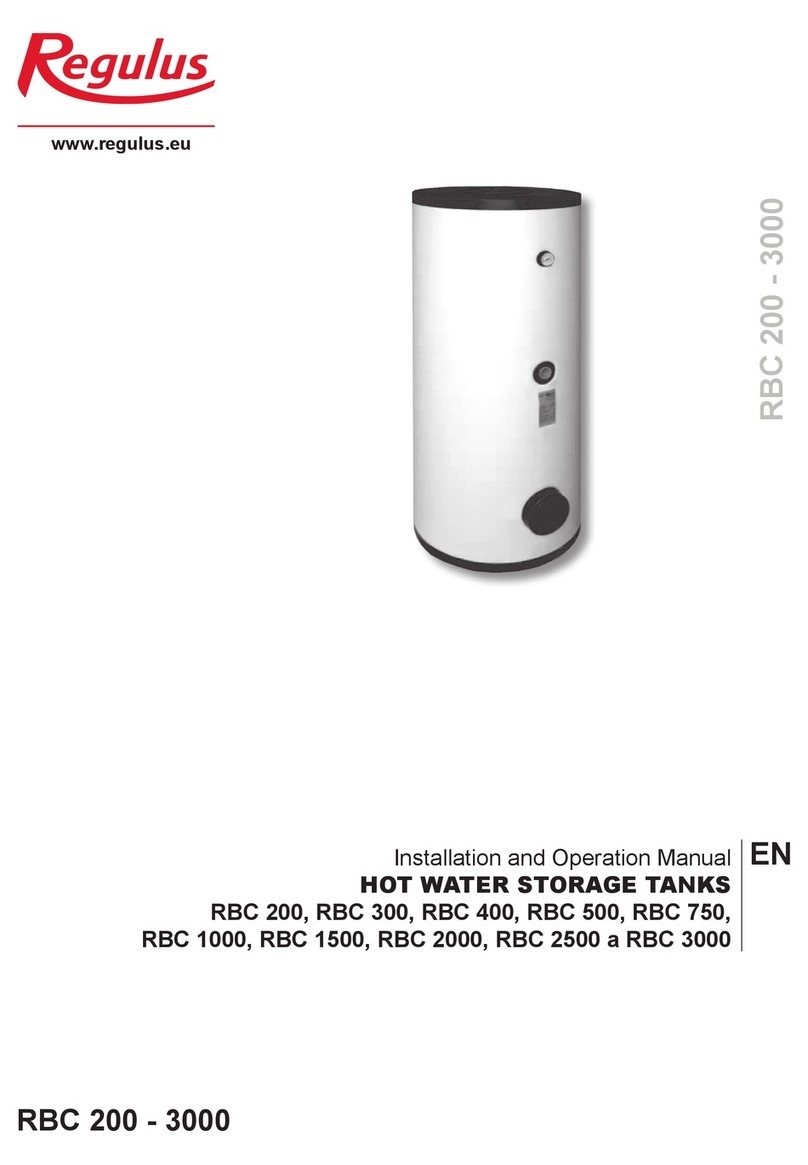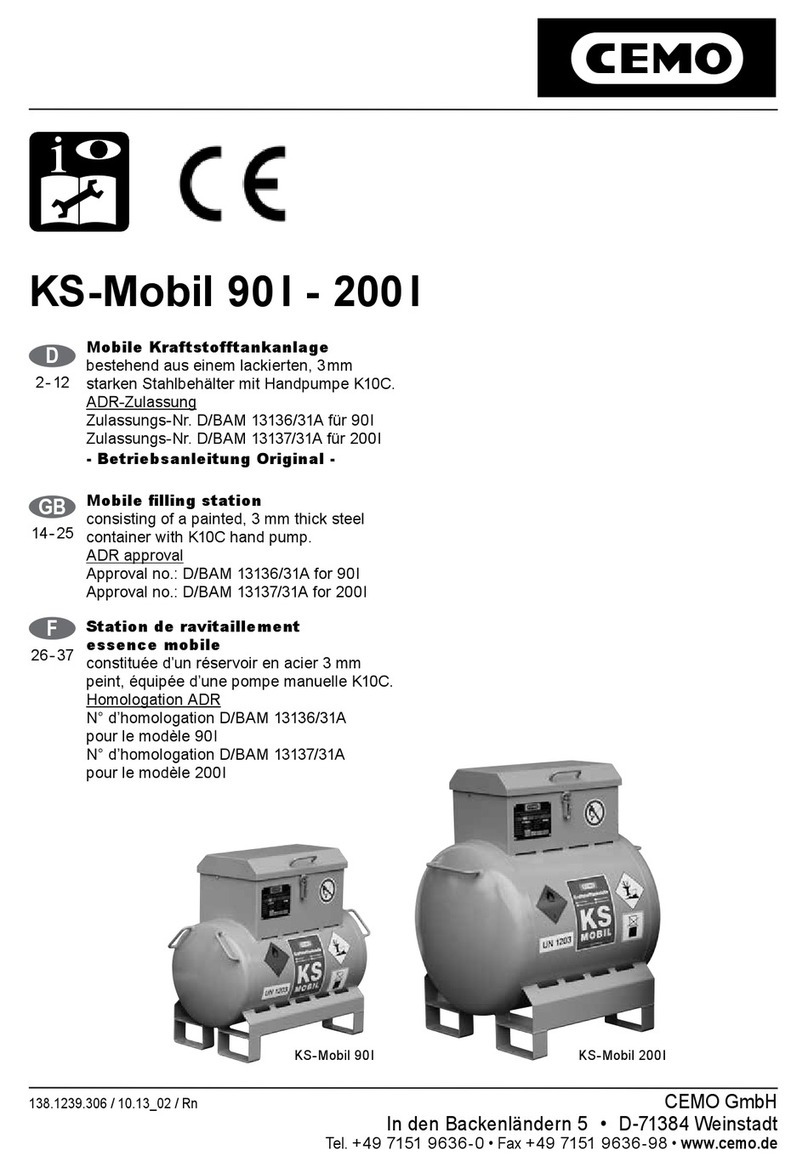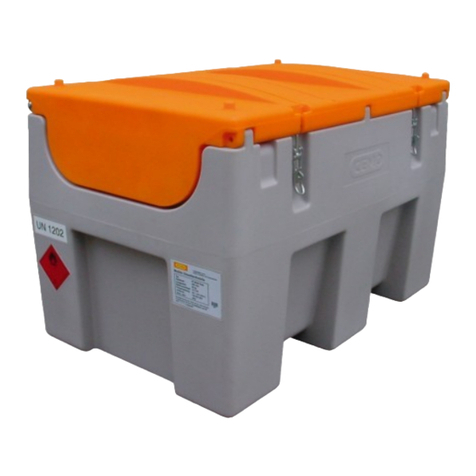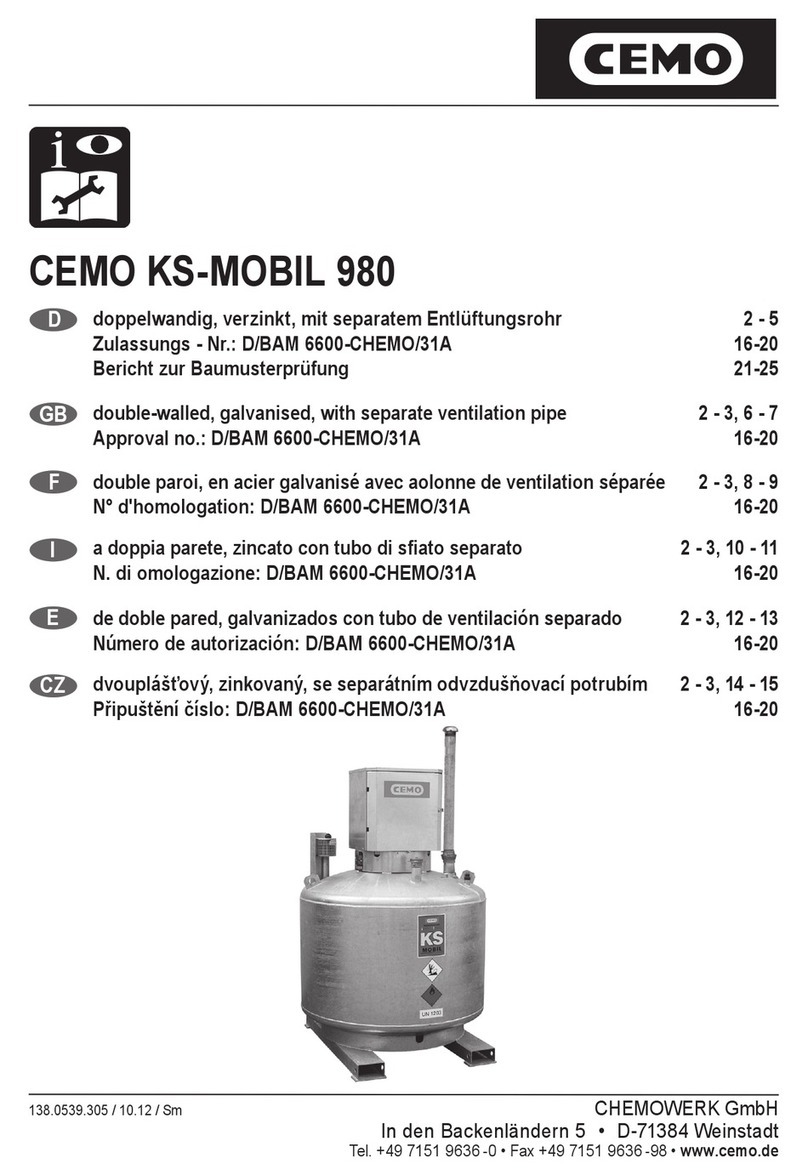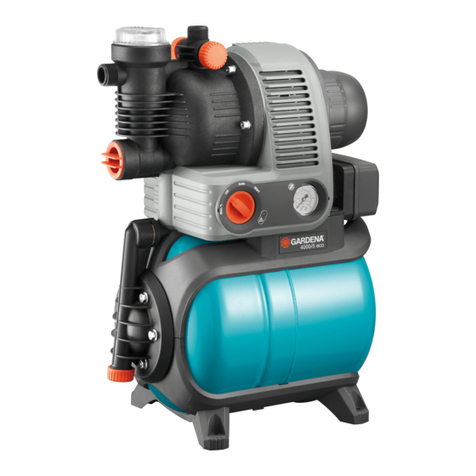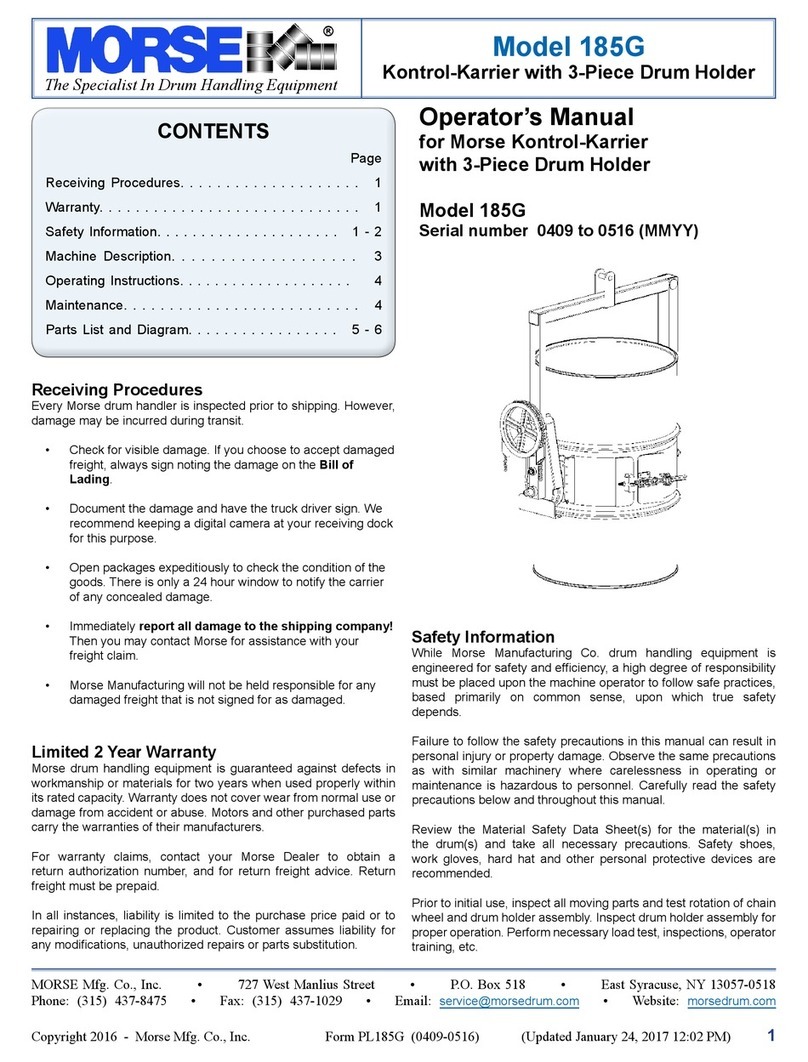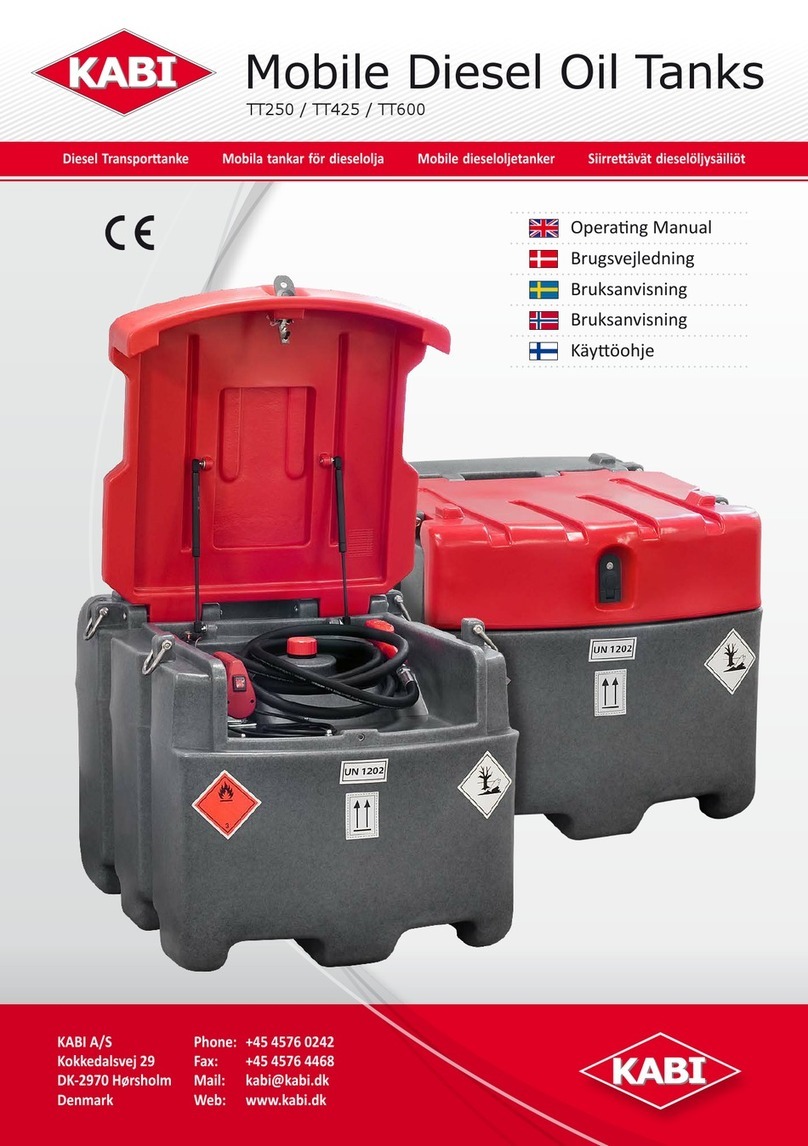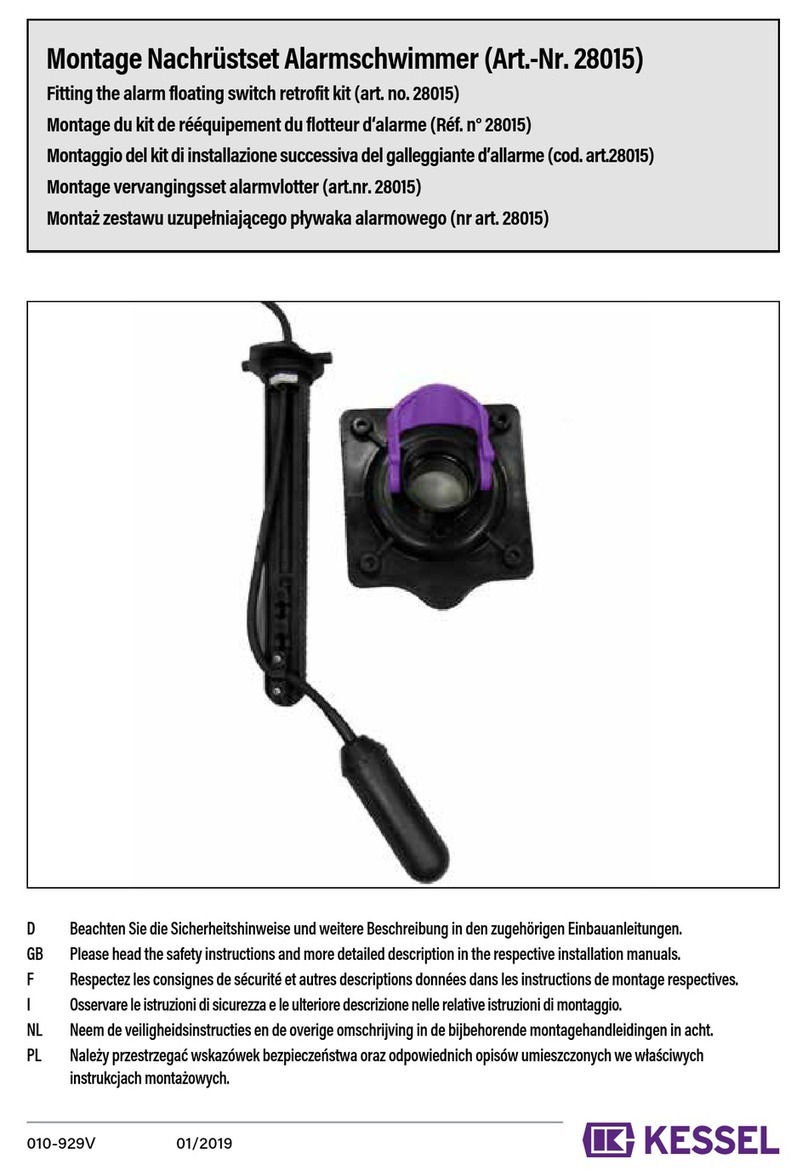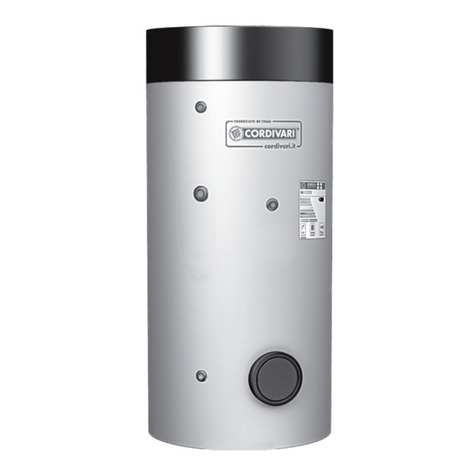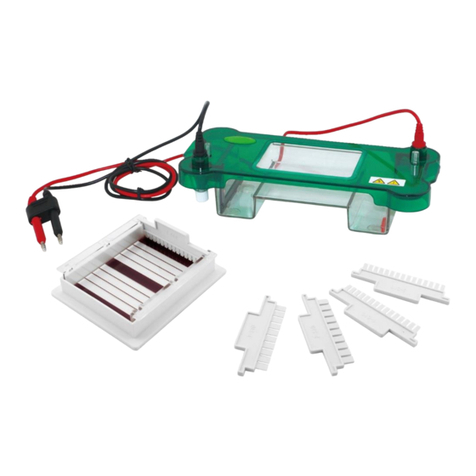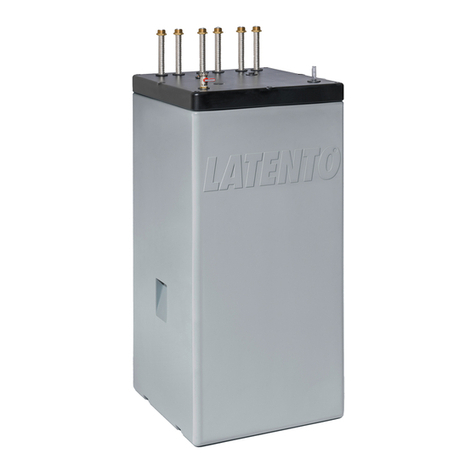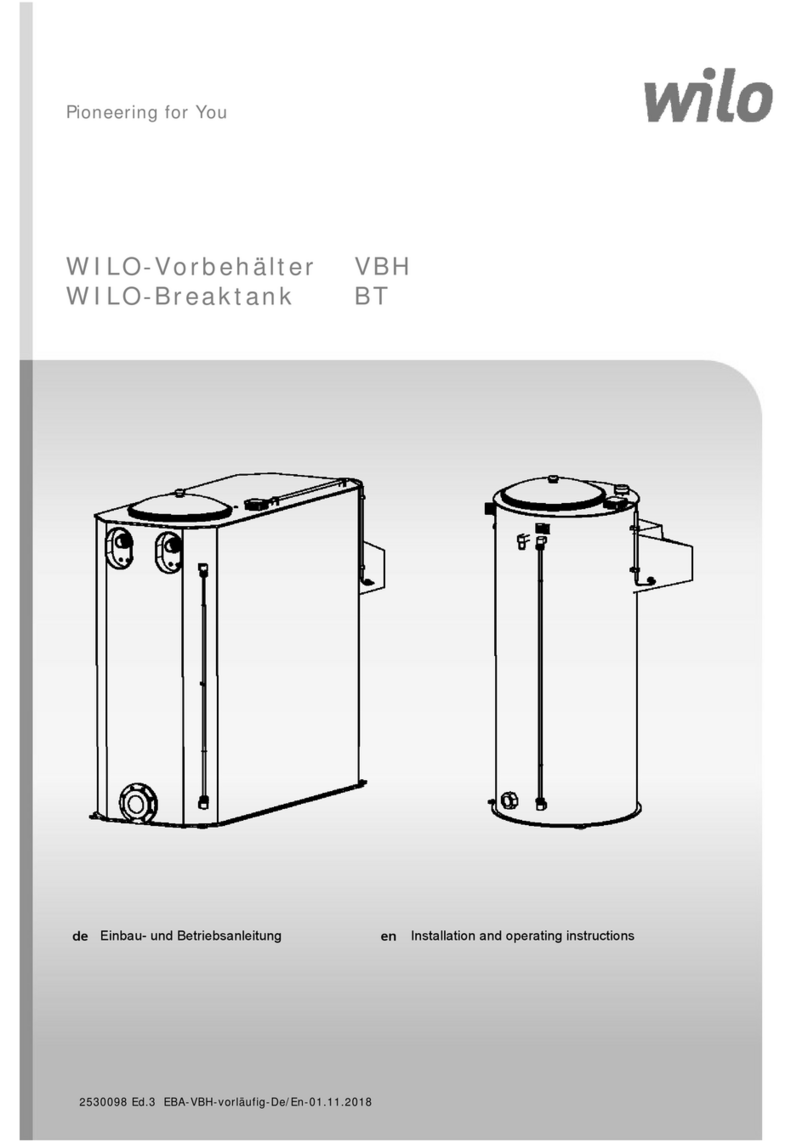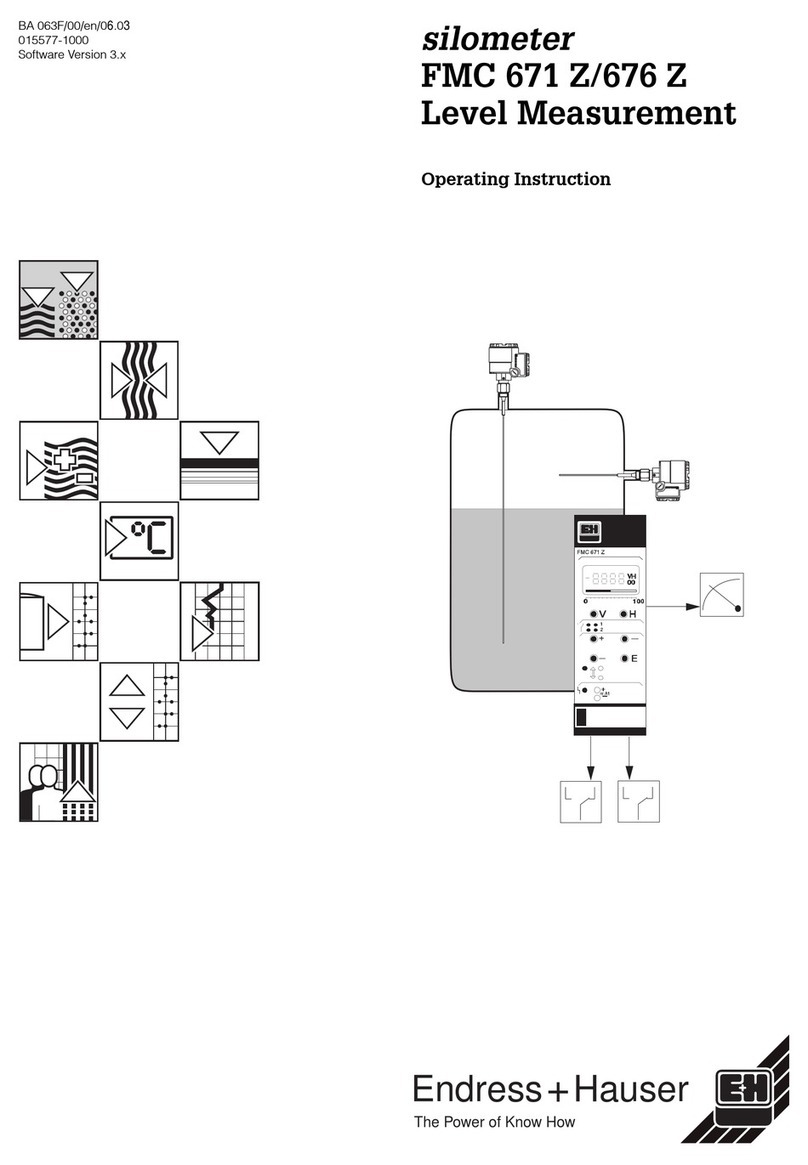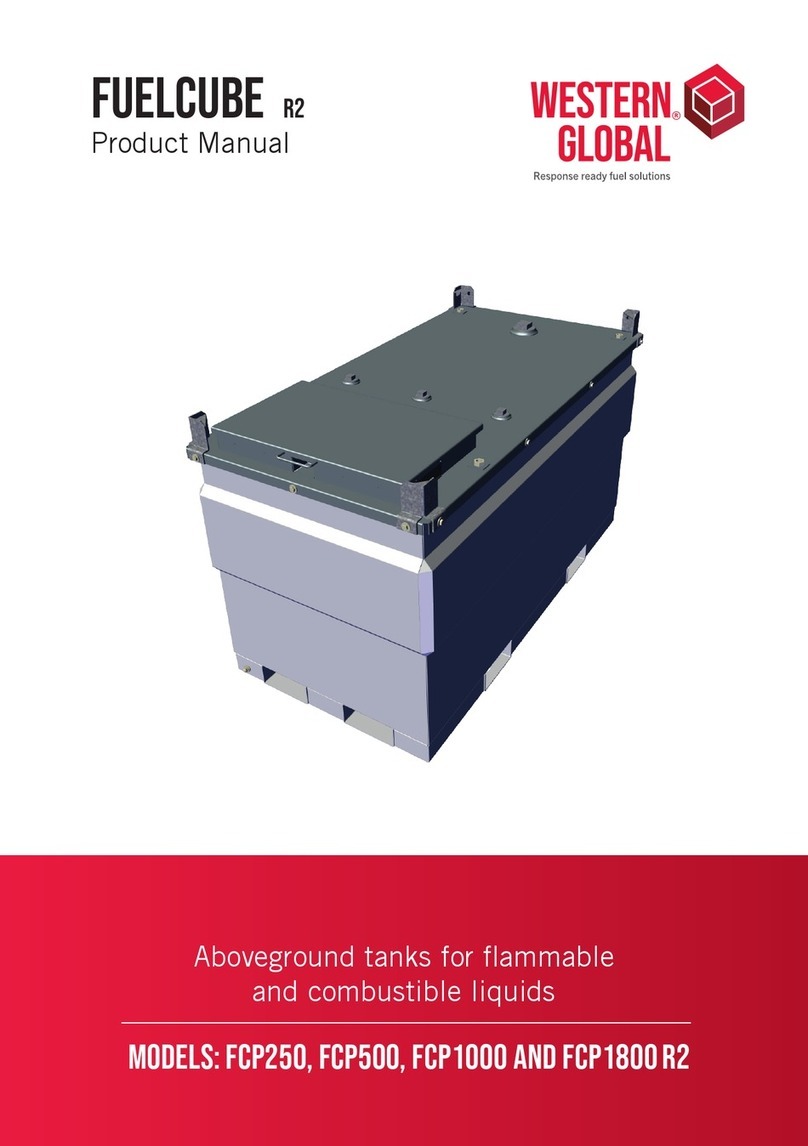
5
D
6. Betrieb
6.1 Transport
Zur Befestigung der KS-Mobil Easy auf dem
Transportfahrzeug mittels geeigneter Spanngurte
(max. 35 mm breit) sind in den Behälter oben
drei Vertiefungen integriert (Pos.
c
). Der optio-
nal darüber liegende Klappdeckel kann ohne
Einschränkung geöffnet werden.
Die einschlägigen Vorschriften für Ladungs-
sicherung sind zu beachten, insbesondere die
STVO, VDI-Richtlinien und die europäische
Norm CEN 12195 Teil 1-4 für Berechnung und
Zurrmittel.
Die Stellfläche des Tanks auf oder im Transport-
fahrzeug muss eben, tragfähig und frei von
spitzen Gegenständen sein. Wir empfehlen
hierzu eine Anti-Rutschmatte zu verwenden!
Bei offenem Transportfahrzeug muss die Tank-
stelle mit der Scharnierseite des optionalen
Klappdeckels in Fahrtrichtung befestigt werden,
damit vom Fahrtwind der Klappdeckel nicht
ungewollt aufschnappt.
Bei geschlossenem Transportfahrzeug ist für
ausreichende Belüftung für Fahrer/Beifahrer und
Tankstelle zu sorgen.
Leere KS-Mobil Easy können mit den
Griffmulden seitlich am Tank von Hand tran-
sportiert werden. Befüllte KS-Mobil Easy kön-
nen an den ausgeformten Vertiefungen an der
Unterseite mit dem Gabelstapler aufgenommen
und vom Transportfahrzeug abgeladen bzw. auf-
geladen werden.
Zum Stapeln dürfen max. zwei leere Tanks über-
einander gestapelt werden. Bei der Ausführung
mit Klappdeckel muss dieser geschlossen sein.
Zur Fixierung befinden sich an der Oberseite des
Behälters/Klappdeckels vier Arretierungsnocken
und an der Unterseite des Behälters vier Ver-
tiefungen.
6.2 Betankung
Auf die horizontale Ausrichtung und ausreichen-
de Ladungssicherung des Tanks ist zu achten!
• Bei Ausführung mit Klappdeckel die Arretierung
des Klappdeckels durch Ausein ander ziehen
der Befestigungslaschen auf der Verschluss-
seite lösen.
• Klappdeckel ganz öffnen.
• Leitfähige Verbindung mit dem Erdungskabel
des Tanks (Pos. e) zum Transportfahrzeug
bzw. zur Erde herstellen.
• Kugelhahn (Pos. d) der Entnahmeleitung
öffnen.
• Schlauch und Zapfpistole aus der integrierten
Halterung entnehmen und Zapfrüssel voll-
ständig in den zu betankenden Tank/Behälter
einstecken.
• Zapfpistole betätigen bzw. öffnen.
• Hebel der Handpumpe in horizontaler
Richtung vor- und zurückbewegen und
Betankungsvorgang beginnen.
Handpumpe nur bei geöffnetem Kugelhahn
und geöffneter Zapfpistole betreiben!
Hinweis: Durch das eingebaute Ventil (Pos. a)
erfolgt die Belüftung und Druck-
entlastung des Tanks automatisch.
In der Umgebung des Tanks ist während
des Tankvorgangs auf ausreichende Be-
und Entlüftung zu achten.
Die Einwirkung von Zündquellen wie
Rauchen oder Feuer sind zu vermeiden.
Explosionsgefahr!
